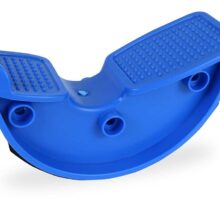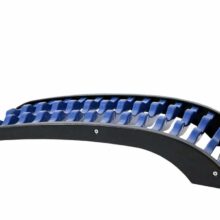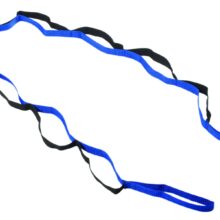Ankle Stretching Aid
Se connecter pour obtenir les prix des revendeurs
The Ankle Stretching Aid will help athletes keep their foot and ankle soft tissues warm and supple and avoid the risk of serious injuries.
Stretching is an essential component of sports medicine that encompasses a range of techniques aimed at improving flexibility, increasing joint range of motion, and promoting overall musculoskeletal health. Whether it’s static stretching, dynamic stretching, or proprioceptive neuromuscular facilitation (PNF) stretching, incorporating stretching exercises into sports medicine practices offers numerous benefits for athletes.
In this article, we will explore the importance of stretching in sports medicine and highlight its significance in enhancing athletic performance and preventing injuries.
One of the primary goals of stretching in sports medicine is to improve flexibility and increase joint range of motion. Regular stretching exercises help lengthen muscles and tendons, allowing them to move through a wider range.
Improved flexibility enhances an athlete’s overall mobility, agility, and performance in various sports activities. It also aids in executing movements with proper form, reducing the risk of muscle imbalances and compensatory movements that may lead to injuries.
Stretching plays a crucial role in enhancing athletic performance. By improving flexibility and joint mobility, athletes can achieve optimal body positioning and movement patterns, leading to more efficient and effective performance.
Increased range of motion allows for greater stride length, improved agility, and better overall body control. Stretching also helps athletes generate more power and force by enabling optimal muscle activation and recruitment.
Stretching is a key component of injury prevention in sports medicine. Flexible muscles and tendons are less prone to strains, sprains, and other soft tissue injuries.
By improving the flexibility and elasticity of muscles, stretching helps prepare the body for the stresses and demands of physical activity. It reduces the risk of muscle imbalances, improves muscle coordination, and promotes proper biomechanics during sports movements, decreasing the likelihood of acute or overuse injuries.
Stretching can aid in muscle recovery and reduce post-exercise muscle soreness. Engaging in stretching exercises after intense physical activity helps relax muscles, alleviate muscle tension, and promote blood flow to the muscles. This increased blood circulation facilitates the removal of metabolic waste products and enhances the delivery of oxygen and nutrients to the recovering muscles.
Stretching can also alleviate delayed onset muscle soreness (DOMS) by reducing muscle stiffness and promoting faster recovery.
Sports medicine professionals recognize the importance of optimal posture and muscular balance in both performance and injury prevention. Stretching exercises that target specific muscle groups help correct muscle imbalances and postural deviations. Tight muscles, particularly in the chest, hips, and lower back, can lead to poor posture and increased risk of injuries. Stretching these muscles helps restore balance, alleviate muscle tension, and promote proper alignment, ensuring optimal musculoskeletal health.
Stretching provides athletes with an opportunity for mental and physical relaxation. Incorporating stretching into pre- and post-workout routines allows athletes to focus on their bodies, connect with their breathing, and promote a sense of calmness. This mental relaxation can help reduce stress, anxiety, and muscle tension, creating an optimal mindset for performance.
Additionally, gentle stretching before bed can facilitate better sleep, aiding in overall recovery and rejuvenation.
Stretching is a fundamental component of sports medicine, offering significant benefits for athletes in terms of performance enhancement and injury prevention.
By improving flexibility, increasing joint range of motion, promoting muscular balance, and aiding in muscle recovery, stretching plays a vital role in optimizing athletic performance and maintaining musculoskeletal health.
Sports medicine professionals recognize the importance of incorporating appropriate stretching techniques into training programs, rehabilitation protocols, and injury prevention strategies to ensure athletes can reach their full potential while minimizing the risk of injuries.

Se connecter pour obtenir les prix des revendeurs
The Ankle Stretching Aid will help athletes keep their foot and ankle soft tissues warm and supple and avoid the risk of serious injuries.

Se connecter pour obtenir les prix des revendeurs
The CanDo® Back Stretcher is designed to replicate the spine’s natural curvature, realign posture and alleviate muscle tension


Se connecter pour obtenir les prix des revendeurs
The Incline Board is useful for stretching the upper and lower back as well as calf muscles in order to keep the tissues in these areas warm and supple.

Se connecter pour obtenir les prix des revendeurs
The Stretch Strap stretches with you and allows you to access the benefits of isometric stretching as a part of your daily workouts.